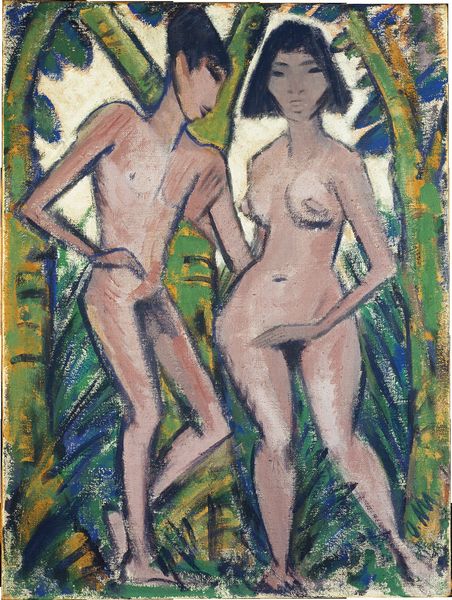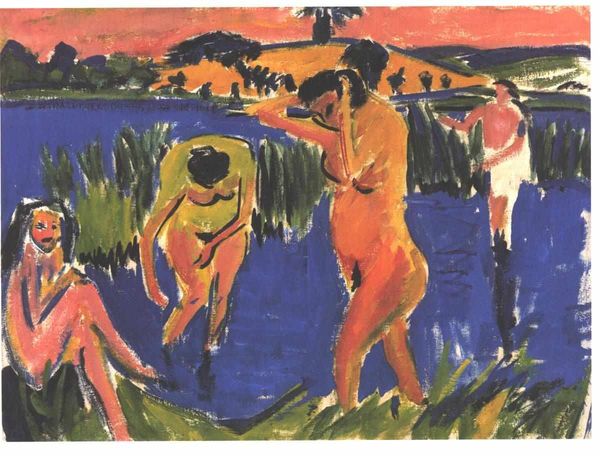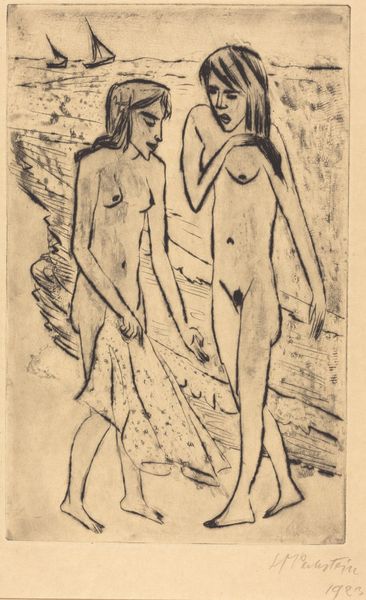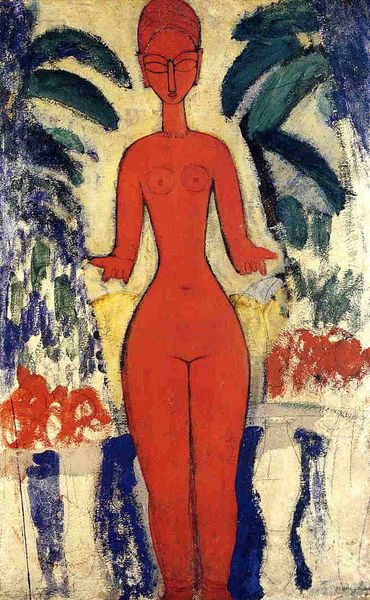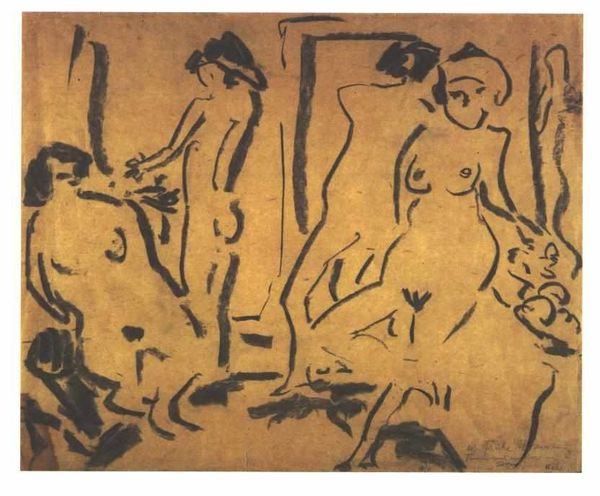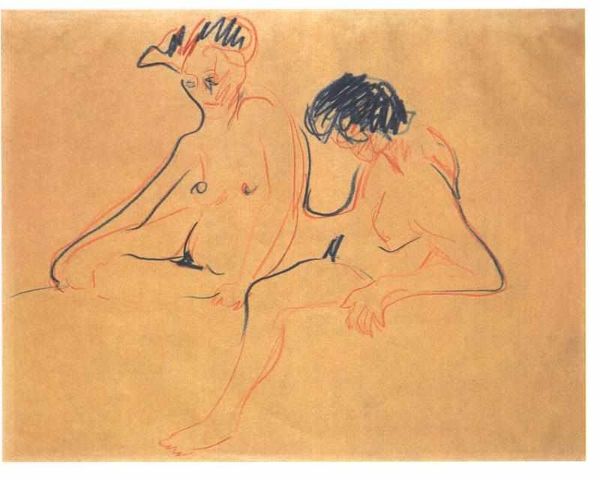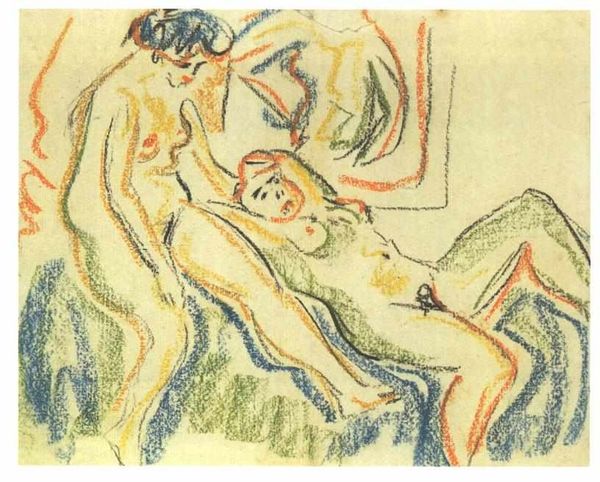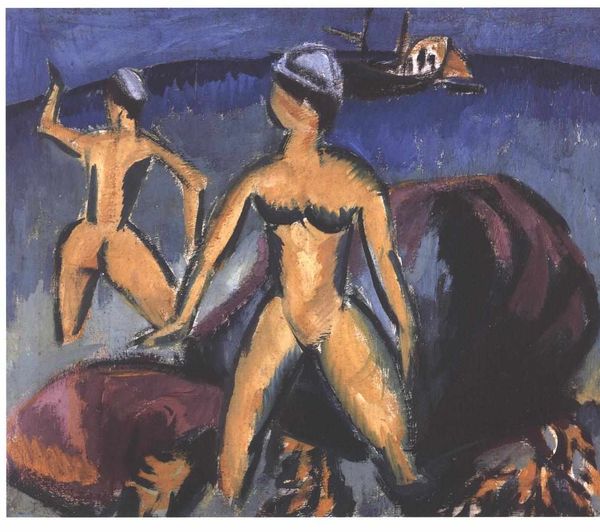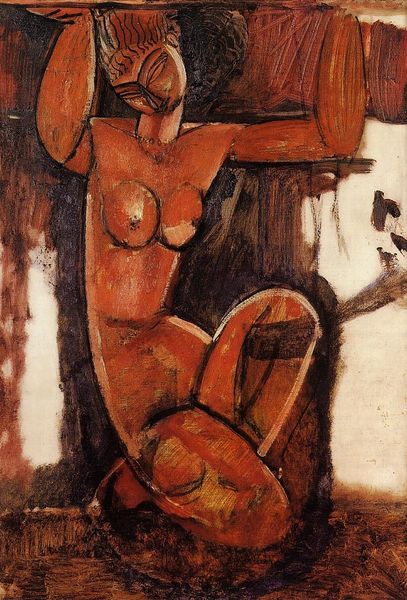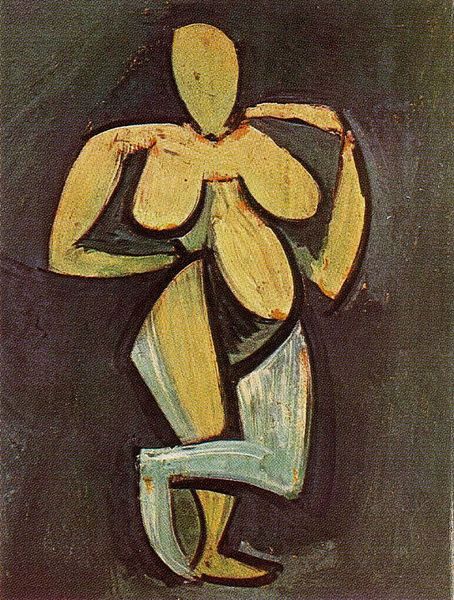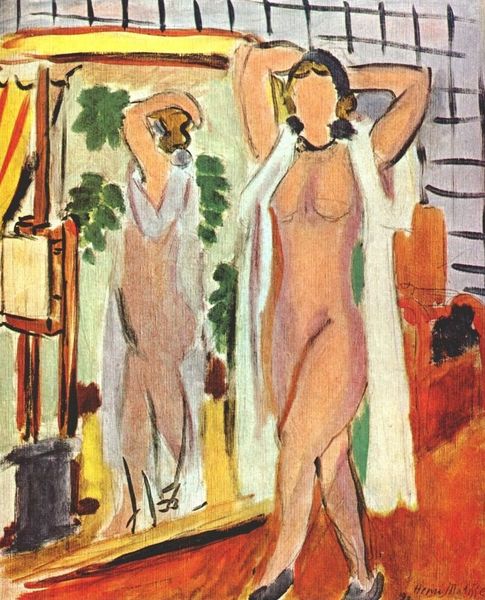
painting, oil-paint
#
painting
#
oil-paint
#
landscape
#
figuration
#
possibly oil pastel
#
romanticism
#
pastel chalk drawing
#
expressionism
#
nude
Copyright: Public domain
Editor: This is Otto Mueller's "Two Great Bathing Nudes." The oil paint on canvas gives the figures a muted, almost melancholic quality, despite the potentially joyful subject matter. What social or historical narratives do you see at play here? Curator: Well, it's worth noting that Mueller belonged to the Die Brücke group, part of the Expressionist movement. Expressionism often explored feelings of alienation and societal unease. The nude, traditionally a symbol of idealized beauty, is here rendered with a certain awkwardness. Do you think that the slightly obscured form serves a political or critical purpose? Editor: Maybe. I'm wondering if these nudes, situated in a kind of abstracted natural landscape, speak to a yearning for simpler, more natural forms of community and perhaps a critique of the industrial world’s effects. Curator: Exactly. The historical context is key here. In pre-WWI Germany, there was a growing back-to-nature movement. These bathing nudes can be viewed as a representation of a longing for an uncorrupted existence, contrasting with the socio-political climate of increasing urbanization and militarization. This image projects a world away from it, an escape if you will. Editor: So, you're suggesting the artwork might function as a visual form of social commentary, implicitly critiquing the era’s dominant values by imagining an alternative? Curator: Precisely. And remember that exhibiting such works, with their challenges to accepted aesthetic norms, had real consequences. Public reception, gallery showings, and critical commentary became battlegrounds in shaping the public role of art. Do you agree it might be? Editor: I do. Thinking about how artwork exists not just as isolated images, but also within networks of social and cultural power makes understanding the meaning so much deeper. Curator: Precisely, and recognizing that really highlights the enduring power of the image!
Comments
No comments
Be the first to comment and join the conversation on the ultimate creative platform.
